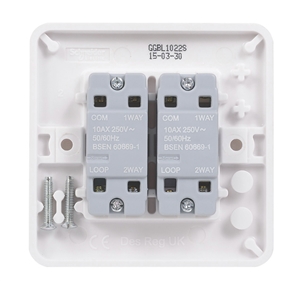I am going to recommend a certain make of light switches to all D.I.Yers. The make starts with an “S”.
They are just great for causing confusion, especially the two way type as the terminals are not traditionally positioned with the common at the point of a triangle and the L1 and L2 together opposite. Also the loop terminal confuses 'em luvverly. I got a load of work today when the householder had wired up some “S” light switches wrongly. GGGGGGGGGGGGrrrrrrrrrrrrrrrreat as that tiger used to say in the breakfast cereal commercial.
Z.


